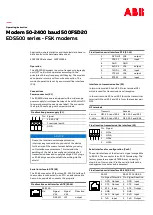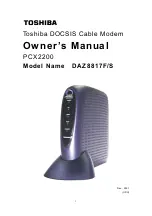
2
3.
If you have one or more serial ports on the back of your
computer, reconfigure your modem. Your modem is shipped
set to COM1 on IRQ4. Reconfigure the modem to either
COM3/IRQ5 or COM4/IRQ2 (refer to Table 2-1 in Sec-
tion 2.4).
4.
Remove your computer's cover
(refer to your computer's owner
manual).
5.
Select any available half-card
slot, and then remove the slot
cover (refer to Figure 2-2).
6.
Carefully slide the internal mo-
dem into the slot you have cho-
sen, applying even pressure un-
til the modem is completely
seated in the slot.
7.
Fasten the retaining bracket
with the screw from the slot cover. Make sure the modem is
properly aligned. Store the slot cover for future use.
8.
Replace the computer cover and plug in your computer.
9.
Connect the telephone cable from the modem (“LINE”
connector) to the telephone wall jack.
10. Optionally connect: 1) your telephone to the modem's
“PHONE” connector, 2) a speaker to the modem's “SPKR”
connector, and 3) a microphone to the modem's “MIC”
connector. Note that the distance between the microphone
and the speaker must be greater than twelve (12) inches
to prevent unpleasant speaker feedback.
11. Turn your computer on. Your modem is now installed.
2.3
Software Installation/Configuration
You are now ready to install and configure the commu-
nication software. Refer to your software manual for instal-
lation procedures. Your software must be configured to
communicate with the modem on the same COM port and
IRQ line used by the modem.
If you are using Microsoft Windows 3.x and have
changed the modem's operating setting from the default COM1/
IRQ4 to COM3/IRQ5 or COM4/IRQ2 to avoid a conflict, you
must use Windows' Control Panel (in the “Main” Group
within Program Manager) to configure Windows to recognize
the new settings before installing any software. In Control
Panel, double-click on Ports. Click once on the icon for the
Com port you have set your modem to. Click the Settings
button. Click the Advanced button. The Base I/O Port
Figure 2-2
Expansion
Slots




































